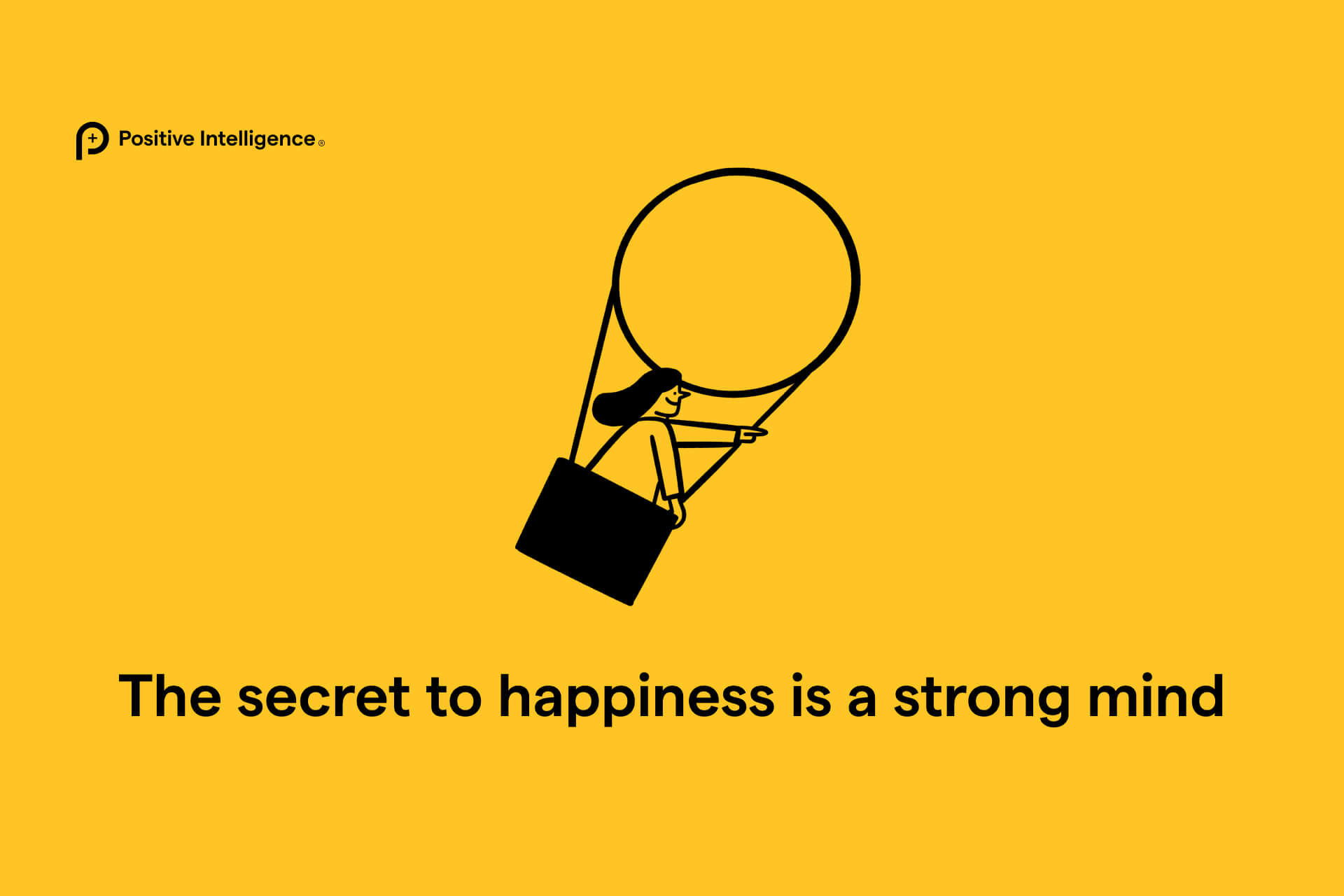
Individual
A self-facilitated program to boost your mental fitness for personal and professional growth
This website will offer limited functionality in this browser. We only support the recent versions of major browsers like Chrome, Firefox, Safari, and Edge.

Select the experience that fits your needs

A self-facilitated program to boost your mental fitness for personal and professional growth

A self-facilitated mental fitness program with exclusive pricing for 2 to 25 individuals

Explore coach-led mental fitness programs with workshops tailored to your organization
Mental Fitness

The pursuit of happiness can often feel like a trap. Most people believe they will be truly happy only after they hit a major milestone: “I’ll be happy when I get the promotion,” or “I’ll be happy when I fix this problem.”
This belief leads to a life of stress, anxiety, and constant searching.
But what if real, lasting happiness isn’t something you have to achieve? What if it is something you can actively build in your mind, regardless of your life circumstances?
Research shows a surprising truth: lasting happiness comes from mastering your thoughts. Mental fitness enables you to shift from depending on external success to mastering your internal mind.
And with this shift, you can achieve happiness and success in all areas of your life, from maximizing performance to strengthening relationships and improving your well-being.
It all starts with defining what happiness actually is.
If you ask yourself, “Have I been happy in the past 24 hours?” your answer isn’t based on your achievements. It’s based on the emotions you experienced.
If your day was full of negative emotions like stress, anxiety, frustration, anger, self-doubt, or regret, you were likely unhappy.
If your day was full of positive emotions like empathy, compassion, curiosity, the joy of creativity, peace, or being grounded in purpose, you were happy.
The simple truth about emotional well-being is this:
You are unhappy when you are in Saboteur mode. This mode is caused by your automatic mental patterns that make you feel stress, shame, and guilt.
You are happy when you are in Sage mode. This mode is activated by the part of your mind that generates wisdom, creativity, curiosity, and compassion.
Happiness, then, is not about what happens to you. It’s about how you respond to what happens to you.
The idea that joy is something you earn after reaching a milestone is called conditional happiness. It’s the lie that your Saboteurs, especially your Judge, tell you: “Right now, you don’t have what it takes to be happy. You will be happy when you have X.”
The science shows why this approach is a trap. Researchers in positive psychology have discovered that there is a baseline level of happiness, or a set point to which you return after major life events.
Imagine winning a huge lottery. You’d feel an enormous spike in happiness, maybe going from a happiness level of 5 to a 10. But research shows that, on average, within a few months, you return right back to your baseline happiness level.
The reverse is also true: if you experience a major loss or accident, your happiness will drop drastically, but over time, you will recover to the same happiness level.
External events only create temporary shifts. This is why the pursuit of conditional happiness is a lie: your achievements alone cannot move your set point of happiness.
So, what determines this baseline, and how can you change it?
Your happiness level is determined by the difference between the strength of your Saboteurs and the strength of your Sage.
Everyone has baseline levels of both. When bad news or a setback happens, it temporarily increases your Saboteur strength. If that Saboteur strength goes above your Sage strength, you become “hijacked,” feeling stress, regret, and unhappiness.
The good news is that you can rewire your brain to strengthen your Sage and weaken your Saboteurs.
This rewiring results in two massive benefits:
1. Fewer hijackings: When a setback occurs, your Saboteur strength doesn’t rise above your new, higher Sage baseline, so you don’t get hijacked as often.
2. Faster recovery: Even when you do get hijacked, your activated Sage allows you to recover to a positive emotional state much quicker.
This means you experience more sustained happiness because you are generating positive emotions more often.
Let’s look at how this plays out in the workplace using a common challenge: the lost client.
Imagine you walk into a team meeting and hear that your company just lost its most important client. You have two options for responding:
Initial hijacking: You immediately feel anger, blame, and disappointment. Your Judge Saboteur might say, “You should have done better! This is a disaster!”
Saboteur contagion: Your upset mood spreads instantly to the team. Your Controller starts panicking, or your Stickler focuses only on whose fault it was.
Result: The team spends the next hour wasted in shame, blame, and emotional friction. You leave the meeting exhausted and feeling profoundly unhappy.
Initial hijacking: You still feel the initial stress (you are human!). But within 30 seconds, you notice the negative emotion and say to yourself, “That’s my Saboteur talking.” You quickly do a PQ Rep (10 seconds of focused physical awareness) to activate your Sage.
Sage Perspective: You shift to the Sage Perspective, which sees every challenge as a gift and opportunity. You immediately ask the team: “How can we turn losing this client into a gift and opportunity?”
Activate the 5 Sage Powers:
Result: The team spends the hour in positive emotions: curiosity, creativity, and empathy. You may leave the meeting feeling tired from working hard, but also happy, because the hour was spent in productive, positive engagement.
You don’t need a crisis to practice mental fitness. You can build your Sage strength any time, anywhere. The Explore Power of the Sage allows you to find endless wonder and fascination in every single moment, right where you are.
Think of your own hand. You may usually take it for granted, but try this. Truly look at your hand as if for the first time in Explore mode:
Notice the lines, curves, and textures.
Gently rub the fingertips of one hand over the palm of the other. Notice the changes in texture and temperature.
See the many colors and the tiny hills and valleys on the skin.
As you become fully present and fascinated by your hand, you are experiencing wonder. If you are experiencing wonder, you are happy.
You don’t need to wait for a vacation to see a magnificent canyon because you can find just as much beauty right in front of you when you are truly present. This is unconditional happiness: a constant awareness of the beauty and possibility available now.
You may be curious about the relationship between mental fitness and deep emotions, like grief. Is it okay to feel sadness?
Here are a few things to keep in mind:
1. Grieving is not a negative emotion. Grieving done through the Saboteurs is about self-pity and feeling like a victim, which prolongs the pain. Grieving done through the Sage is about truly loving and honoring what is precious and what was lost.
2. When waves of grief wash over you, the Sage practice is to use PQ Reps on the sensations of the grief. Notice the tightness in your chest, your breathing, or your throat. By using a PQ Rep to observe the physical sensations of grief, you activate the healing, compassionate part of your brain. The memory of your loss becomes connected with love and peace, accelerating the healing process.
It is impossible for any human being not to get hijacked sometimes. Your goal is to reduce the number of hijackings and recover faster every time it happens.
Chasing external success in the hope of finding happiness is a cycle that leaves you exhausted. The key is to shift the way you think and respond.
By committing to a daily mental fitness practice, you rewire your brain to increase your set point of happiness.
Then, happiness is no longer dependent on the outcome of a meeting or the state of your relationships. Instead, it is generated moment-by-moment by the choices you make.
Remember that cultivating your happiness is not selfish. Putting the “oxygen mask” on yourself first creates a ripple effect, leading to a happier team at work, happier loved ones and friends, and a happier world around you.
What is one action you will commit to today to begin raising your set point of happiness?

